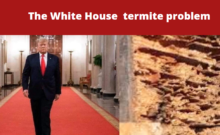Human Trafficking.
The term conjures up a number of different images. Perhaps for those unfamiliar with the term, it may bring to mind a crowded urban sidewalk at quitting time, while those with a familiarity may create the visualization of an individual being bought and sold as a commodity. For most, it takes their mind and soul to a sympathetic place on behalf of those poor unfortunates in a far away land.
The year is 2009 and trafficking of our fellow humans is at its greatest level in the history of mankind. And within this staggering ignoble statistic lays the painful realization that so many of these “fellow humans” are children. We don’t have to point to country X or country Y, we do, however have to raise our head and take an honest look around. Last time I looked, slavery had been abolished in the United States with the 13th Amendment, yet I look up from my desk today and see it still exists. Within our society we continue to allow to exist those who enslave, who treat our youth as a mere commodity, and who force our children into prostitution, forced labor or other slave-like situations.
This is, but an initial piece to educate myself and you as to the situation and get our collective mind’s juices flowing so as to address the need to bring those who enslave to justice.
The skeptic says, “This can not be.” The hopeful says, “There aren’t many.” And the activist says, “Where are they and how can I make a difference.” I want to spark the activist in all of us, educate the skeptic in each of us and engage with you the shared hope that if we each take one demonstrable action we can take one of these individuals who are exploiting our youth off the street and make a difference to many children – today and tomorrow.
According to Stop Child Trafficking Now, the average predator enslaving a young girl and prostituting her services will average over $200,000 per year in income. The organization goes on to articulate that each year over 300,000 children are at risk of being exploited within the commercial sex trade. While Shared Hope International, in their Department of Justice funded national study published in May 2009 on “Domestic Minor Sex Trafficking – America’s prostituted children” showed a similarly tragic set of statistics, putting the number at 100,000. I found enlightening the key findings of this report:
1. Misidentification – Shared Hope International found misidentification of the victims to be the primary barrier to the rescue and response to domestic minor sex trafficking victims. This misidentification occurs at all levels of first responses from law enforcement arrest on the streets to homeless and runaway youth shelters’ intake process, to court adjudication of the victim as a delinquent for habitual runaway or drug possession, or other offense occurring as a result of the prostitution of the child. Misidentification causes a chain reaction of negative outcomes. It is responsible for the failure to deliver the necessary services to interrupt and treat the trauma they have endured. It is often the cause of their adjudication as delinquents or criminalization as adult offenders of prostitution, leading to detention and/or a criminal record with resulting lack of access to victim of crime funds. Misidentification can be remedied only through awareness and education of first responders and the community at large to properly identify the indicators of domestic minor sex trafficking and to respond with the appropriate treatment and approach developed by experts in the specific trauma caused by trafficking.
2. Criminalization of the Victim through Misidentification -Victims of domestic minor sex trafficking are frequently processed as juvenile delinquents or adult prostitutes. Prostituted juveniles are trained by their trafficker/pimp to lie to authorities and are provided with excellent fraudulent identifi cation resulting in their registration in the arrest records as an adult— an identification that follows them through their years as a minor unless and until it is corrected by the insight of a law enforcement officer who recognizes the victim is a minor and pursues a correct identification. Law enforcement cited this problem as a barrier to identifying a child sex trafficking victim. Those victims who are identified as minors are frequently charged with a delinquent act either for prostitution-related activities or for a related offense, such as drug possession or habitual runaway. These children are found in detention facilities across the country, as well as in juvenile justice rehabilitative programs. Due to the unique trauma bonding that occurs between a victim and her trafficker, these children often run from juvenile facilities right back to the person that exploited them.
3. Criminalization as a Response to No Options for Placement -Law enforcement officers report they are often compelled to charge a victim of domestic minor sex trafficking with a delinquency offense in order to detain her in a secured facility to keep her safe from the trafficker/pimp and the trauma-driven response of flight. The frustration of first responders with this maneuver was widely expressed; however, in the absence of better options, this stop-gap measure continues. The results are detrimental for the victim who rarely receives any services in detention, much less services specific to the trauma endured through sex trafficking. Also, the entry of the juvenile into the delinquency system can disqualify her from accessing victim of crime funds for services in some states.
4. Inappropriate or Inaccessible Services for Domestic Minor Sex Trafficking Trauma – Experts speak of the trauma suffered by child sex trafficking victims as more severe than most sexually based trauma given the chronic nature coupled with the reinforced victimization from the community at large of buyers. Therefore, the services required for a child sex trafficking victim are unique and rarely available. Many victims cannot access the services due to their detention and resulting label of juvenile delinquent. In some cases, the victim’s access to services can be contingent on cooperation with law enforcement in an investigation into the trafficking crime. Sex trafficking is the only sex crime in which the victim is threatened with incarceration or denial of services to elicit facts about the crime.
5. Burden on the Victim to Build the Case Against the Trafficker/Pimp – Arrest and prosecution of the traffickers is too frequently based solely on the victim’s cooperation and testimony. This approach places the burden on the victim rather than on the investigators — a burden that is most often too heavy for these traumatized children who typically require a lengthy amount of time before they will disclose the facts of their victimization and only if approached with advanced interview techniques to help them with this disclosure. For these reasons, it is critical in cases of domestic minor sex trafficking that law enforcement pursue innovative or alternative investigation to corroborate the victim’s allegations. Currently, law enforcement agencies typically are not trained in alternative investigative approaches and/or are not provided with adequate resources to develop and initiate these alternative techniques.
6. Lack of Protective, Therapeutic Shelters for Domestic Minor Sex Trafficking Victims – Only five residential facilities specific to this population exist across the country. These include the Girls Educational and Mentoring Services (GEMS) Transition to Independent Living (TIL) in New York City, Standing Against Global Exploitation (SAGE) Safe House in San Francisco, Children of the Night in Los Angeles, Angela’s House in Atlanta, and the Letot Center in Dallas. There are initiative groups striving to establish these unique shelters for the population of domestic minor sex trafficking victims in their areas, but the need outpaces the development. The New York State Safe Harbor for Exploited Children Act passed in 2008 calls for the establishment of such shelters, as will future safe harbor legislation in states already considering it — establishing these protective shelters is critical for an effective strategy to combat domestic minor sex trafficking.
7. Insufficient Priority on Combating Demand – Buyers are not being recognized as a critical component in the sex trafficking of children, yet demand is the primary driver of the commercial sex industry within which children are being exploited for commercial sex activities and performance. Buyers of sex with children can be preferential (pedophiles), opportunistic (thrill-seekers), or situational (do not care how old the person being prostituted is) — they are all committing a crime. Frequently, arrests of buyers are pursued in the traditional investigative technique of decoys which is limited to targeting “johns” in general and cannot specifi cally target a buyer of child sex given the decoy’s age. Innovative investigative techniques that shift the burden of making the case against a perpetrator away from the juvenile victim and focus instead on arresting all parties to the crime of the sexual exploitation of a child are required.
I applaud Shared Hope International for their study and their findings. I read the entire national report and the ten urban reports (which I will address in future pieces) and encourage you to do the same (see below for the link).
Want to learn more? Want to do more?
United States:
- National Human Trafficking Resource Center – The Polaris Project (nhtrc.polarisproject.org)- founded in December 2007, a non-profit, non-governmental organization working to combat human trafficking and modern-day slavery. The NHTRC operates a national toll-free hot-line, available to answer calls from anywhere in the country, 24 hours a day, 7 days a week, every day of the year. HOT LINE: 1-888-3737-888
- Stop Child Trafficking Now (www.sctnow.org) the organization focuses it attention on the organizations and individuals engaged in the heinous crime of trafficking children. They fund action, action focused on bringing to justice those who prey on our children.
- US Department of Justice – Child Exploitation and Obscenity (US DOJ CEOS) This unit was founded in 1987 to protect the welfare of America’s children, is part of the Criminal Division and works with the 93 US Attorney Offices throughout the country. They investigate and prosecute violations of federal law related to producing, distributing, receiving, or possessing child pornography, transporting women or children interstate for the purpose of engaging in criminal sexual activity, traveling interstate or internationally to sexually abuse children and international parental kidnapping.
Global:
- The Swiss foundation of Terre des hommes (www.tdh.ch) was founded in 1960. Over the ensuing 40 years, the organization specialized in three areas: Health, Social Care and the Rights of the Child. In 1999, they focused their attention on the trafficking of children (www.childtrafficking.org) and in 2001 they launched the global campaign Stop Child Trafficking, which together with local partners in 33 countries addresses the situation in six regions of the world: Europe, Southeast Asia, South Asia, Southern Africa, South America and Western Africa.
- The US foundation of Shared Hope International (www.sharedhope.org) was founded in 1998 and focuses on the victims of human trafficking and slavery. The organization’s mission statement notes they “work diligently across the world, partnering with local groups to help women and children enslaved in the sex trade by providing them with shelter, healthcare, education and vocational training opportunities. Our three-pronged strategy—prevent, rescue and restore—is producing hope.” Shared Hope International’s report, “Domestic Minor Sex Trafficking – America’s prostituted children“ (pdf – 83 pages).
If you are staggered by the above, you are not alone, and if I have been successful, I’ve energized the activist in each of you. I’ll do my part and speak from the heart on this and similar topics..
Thank you for your time.
All the best,
Christopher


